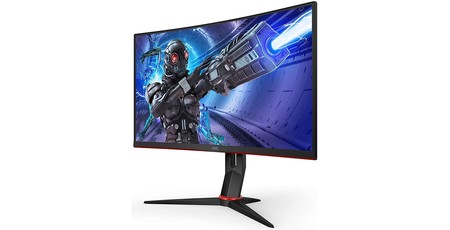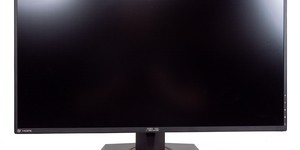
Performance Analysis
Image Quality
Next to an array of TN and IPS panels in the office, the typical VA panel advantages were immediately apparent, and these were borne out by the results. The contrast ratio measurement tops the chart, and at lower brightnesses the black point was too low even for our colorimeter. You also get very good viewing angles.
The default brightness is 200cd/m2, which is brighter than the recommended but takes care of brighter environments. That said, the peak of 250cd/m2 is on the low side.
The screen is not truly wide-gamut, but it does go wider than sRGB by some margin. It also outputs accurate colours, as we observed an average delta E around 1.54, which is very good, especially when combined with a maximum of just 2.47. The gamma curve is slightly off the ideal, but the out-of-box setting is the best one; the other two shift it too far in either direction. The good results are topped off by a default white point of 6300K straight out of the box. This is nice and close to the ideal value of 6500K, and there’s no benefit switching to the built-in sRGB profile (colour accuracy actually degrades).
Unfortunately, there is some pretty obvious backlight bleed with this screen, and the uniformity results also leave room for improvement both on colour and brightness. Nonetheless, the overall default experience with static imagery is good both subjectively and in more objective terms.

Gaming
While even 144Hz is an obvious and welcome upgrade over standard 60Hz, some of you may be wondering if there’s an obvious difference between 144Hz and 240Hz, and the answer is yes. Once enabled, your mouse movements attain a new, even higher fluidity (to an almost unsettling degree), but the real question is of course the difference it makes in games.
With the usual caveat of it being necessary to ensure you have a frame rate to match, the answer is a definitive yes, especially with adaptive-sync enabled. With CS:GO an easy game to get to beyond 240fps at 1080p, we jumped into a game and straight away the difference was clear. Movements were sharper and less blurry, and the whole thing just felt even more responsive. It didn’t make us any better, mind, but it’s certainly very satisfying.
Sadly, the ghosting associated with VA panels is also more obvious on this screen than we’ve seen in a while. Even moving the mouse and windows around on the desktop can cause some visual oddities, but the Blur Busters UFO test, among others, showed the ghosting immediately. Like most, the C27G2ZU has built-in overdrive settings, and the Medium one gives you the best balance (Strong leads to very obvious overshoot), but it never fully fixes the issue.
Whether or not you’re bothered by the ghosting will depend on how sensitive you are to it and the specific game and scenario – transitions from one colour to another are worse than others, so certain scenes or art styles will make it more or less obvious, but to us it definitely reached the territory of being a distraction.
Conclusion
From the start, we were curious as to whether there would be any major sacrifices in a screen that offers 240Hz at so competitive a price. One, which was obvious from the specs alone, is the loss of sharpness that comes with using 1080p at 27”. For a user primarily concerned with gaming, that’s less an issue, but for anyone interested in a balance of work and play, we still recommend 1440p at this resolution – the desktop real estate is well worth having to drop to 144Hz.

The crux of the issue, however, is the level of ghosting. It’s an issue that plagues all screens to one degree or another, but here it’s so obvious that it can be distracting in certain scenes. Quite how distracting depends on the game and your sensitivity to the effect, but for us it’s enough to hold back on recommending the screen outright.
AOC has done a good or even a great job in most areas getting a 240Hz offering to this price, and while the VA panel offers great contrast, deep blacks, and generally good measured image quality, the pixel transition time holds it back. If 240Hz is your top priority, your budget is tight, and you think you can tolerate the ghosting, there’s nothing else of concern. It’s also worth remembering you can find the screen for as low as £270 if you go for the slightly different model number (C27G2ZE) and do away with the USB hub and speakers.

MSI MPG Velox 100R Chassis Review
October 14 2021 | 15:04






Want to comment? Please log in.